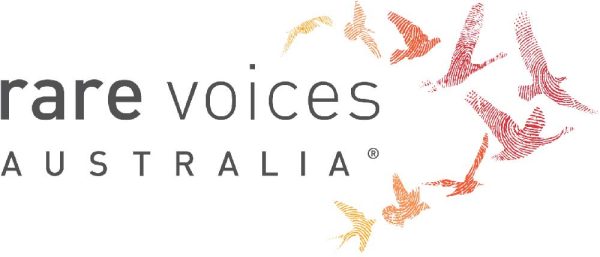Charles Bonnet syndrome (CBS)
Quick Search
- Summary
- Synonyms and Classifications
- Symptoms
- Disability Impacts
- Cause and Inheritance
- Diagnosis
- Treatment
- Clinical Care Team
- Clinical Care Guidelines
- Emergency Management
- Research
- Rare Disease Organisation(s)
- Lived Experience
- Support Services and Resources
- Mental Health
- Other Information
- Useful Links for Healthcare Professionals
Summary
Charles Bonnet syndrome (CBS) is a vision-related condition, in which individuals see images that are not actually present (phantom images) due to decreasing or loss of vision.1-2 CBS is a distinct clinical condition, as recognised by the World Health Organization (WHO), and is not due to psychosis, dementia, or other neurodegenerative issues.1 It is important for health professionals to be aware of CBS and help individuals to understand that it is a vision-related condition and not a mental condition.1
CBS has been described as “phantom images in vision-impaired people of sound mind”. In CBS, the visions that appear are purely visual, and cannot be heard, smelt, felt or tasted. The type of images that are seen varies between individuals, and an individual with CBS may see more than one kind of image. The images may be black and white, or in colour, and may be still or moving.1
CBS can affect all ages (from 5 yrs upwards) but tends to be reported more in older people as most cases of vision loss occur in later life.1-3 For many individuals, the symptoms can persist for five or more years.1-2
Synonyms and Classifications
Synonyms: visual release hallucinations, phantom vision syndrome
Universal rare disease classifications provide a common language for recording, reporting and monitoring diseases. Please visit the Rare Disease Classifications page for more information about these internationally recognised classifications.
There is no known ORPHAcode.
Symptoms
Individuals with CBS see images that are not actually present (phantom images). These images may include shapes or patterns, or physical things such as faces, people, animals, buildings, plants, and even landscapes.1-2 They may be still or moving images, and may be in black and white, or in colour.1
These images may suddenly appear and may last for a few minutes up to several hours.1-2
In some individuals, these symptoms may stop after 12-18 months, but in many individuals, the symptoms often persist for up to 5 or more years.1,2 The type of images that appear may change over time.
Individuals with CBS often experience anxiety due to these phantom images and are often concerned that it is a sign of mental illness, or that they may not be believed or taken seriously by others.1-2
Please speak to your medical team to learn more about the signs and symptoms of CBS.
Disability Impacts
Rare diseases are often serious and progressive, exhibiting a high degree of symptom complexity, leading to significant disability. Majority of the estimated two million Australians living with a rare disease meet the Australian Government’s definition for disability (in accordance to the Australian Public Service Commission and Australian Bureau of Statistics), and many experience severe and permanent disability impacts. If you or someone you care for is experiencing disability-related impacts from a rare condition, please speak with a health or disability professional for advice. Information about relevant disability support can be found at the RARE Portal’s Disability Support Information page.
Cause and Inheritance
CBS has been associated with vision impairment.1 CBS is often described in individuals with conditions that affect their vision, such as age-related macular degeneration (ARMD), glaucoma, cataracts, and retinal abnormalities.1,3 The syndrome though is not restricted to eye disease but can be elicited when there is any form of damage along the visual pathways from the optic nerve to the visual cortex, such as due to brain injuries, brain tumour, and stroke.1-2
The cause of the phantom visions is not well understood, but it is thought to be due to the brain reacting to the decrease in or loss of vision.1-2
Diagnosis
There is no definitive diagnostic test for CBS.
CBS is known as a diagnosis of exclusion, which means that all other possible causes (such as medication side effects, electrolyte imbalance, neurological or psychiatric causes) need to be ruled out.2
Please speak to your medical team to learn more about the available diagnostic pathways for CBS.
Treatment
There is currently no effective treatment for CBS. In some cases, treating the cause of the vision loss (such as removing cataracts or retinal reattachment) can help reduce or resolve the phantom images.1-2
There are some strategies that can help make the visions go away temporarily, such as:1-2
- frequent blinking and rapid eye movements
- changing positions from sitting to standing (or vice versa)
- changing the levels of light in the environment (turning on or off lights)
- distraction techniques
Other strategies to manage CBS symptoms include:1-2
- regular monitoring of eye vision
- use of visual aids to improve vision
- reduce stress and anxiety as that can worsen the symptoms
- seek peer support and reduce social isolation
Please speak to your medical team to learn more about the possible treatment or management options for your condition. Treatment will depend on an individual’s specific condition and symptoms. It is also important to stay connected to your medical team so that you can be made aware of any upcoming clinical trial opportunities.
Clinical Care Team
Clinical care for rare diseases often involves a multidisciplinary team of medical, care and support professionals. Please note that the information provided here is as a guide and that RVA does not necessarily monitor or endorse specific clinics or health experts.
Healthcare professionals involved in the diagnosis and treatment of CBS may include general practitioners (GP), neurologists, psychiatrists, geriatricians and ophthalmologists. The need for different healthcare professionals may change over a person’s lifetime and extend beyond those listed here.
Clinical Care Guidelines
Royal Australian and New Zealand College of Ophthalmologists (RANZCO): Charles Bonnet Syndrome is a position statement developed to provide guidance to RANZCO’s Fellows and other health professionals regarding diagnosis, treatment and management of CBS.
Emergency Management
Individuals living with rare diseases may have complex medical issues and disabilities, which are not always visible. It is often useful to refer to their medical history as well as personal information such as a medical card, doctor’s letter, or if available, a rare disease passport, for relevant information.
It may be important to consider the following when managing individuals living with RD at emergency departments/services:
CBS is a vision-related condition in which individuals see phantom images and is not thought to be related to mental illness or neurodegenerative conditions.1
Research
There are specific considerations around participating in rare disease research, including clinical trials. It is important to be mindful of issues such as data privacy, research ethics, consent and differences in research regulations between Australia and other countries.
If you are interested in finding clinical trials for your condition, please visit the following websites; however, there may not be any clinical trials available:
It is best to discuss your interest in any clinical trials with your medical team to determine suitability and eligibility.
Please note that RVA does not necessarily monitor or endorse each group/organisation’s operational governance and activities.
Rare Disease Organisation(s)
Australian Organisation:
Charles Bonnet Syndrome Foundation (CBSF)
Website: https://www.charlesbonnetsyndrome.org/
Please note that RVA does not monitor or endorse each group/organisation’s operational governance and activities. When engaging with a group, please consider the information on the RARE Portal’s Finding Helpful Peer and Community Supports page.
Lived Experience
CBS greatly varies between individuals. Each person’s experience is unique.
Please visit Charles Bonnet Syndrome Foundation (Australia) – CBS: Personal stories to read the personal stories of people living with CBS.
If you would like to share your personal story with RVA, please visit the Rare Voices Australia: Share Your Story page. RVA will consider your story for publishing on our website and inclusion on the RARE Portal.
Support Services and Resources
Charles Bonnet Syndrome Foundation: Our Services offers support for individuals with CBS.
Vision Australia provides support and services to people of all ages and stages of life who are blind or have low vision.
For information on available government and social services that provide support for individuals with a rare disease, please visit the National and State Services pages.
Mental Health
People living with a rare disease, including families and carers, often face unique challenges such as diagnostic delays, misdiagnoses, limited treatment options, and limited access to rare disease specialists and support. These challenges may impact people’s emotional wellbeing and quality of life. Many people find it helpful to seek mental health and wellbeing support to cope with ongoing stress and uncertainty. Connecting with people who have shared experiences through a support group may also be helpful. Information about relevant mental health and wellbeing support can be found at:
- Mental Health and Wellbeing Support for Australians Living with a Rare Disease
- The National and State Services pages underneath the ‘Mental Health’ sections listed
Other Information
Further information on CBS can be found at:
Useful Links for Healthcare Professionals
References
- Royal Australian and New Zealand College of Ophthalmologists (RANZCO). Position statement: Charles Bonnet Syndrome. New South Wales; 2023. 6p. https://ranzco.edu/wp-content/uploads/2018/11/Position-Statement-Charles-Bonnet-Syndrome.pdf
- healthdirect. Charles Bonnet syndrome. Accessed 10 July 2024. https://www.healthdirect.gov.au/charles-bonnet-syndrome
- Rojas LC, Gurnani B. Charles Bonnet Syndrome. Updated 25 July 2023. In: StatPearls [internet]. Treasure Island (FL): StatPearls Publishing. 2024- Accessed 1 August 2024. https://www.ncbi.nlm.nih.gov/books/NBK585133/
Contributors
This page has been co-developed by Rare Voices Australia (RVA)’s RARE Portal team in consultation with Charles Bonnet Syndrome Foundation.
If you are aware of any additional information that may benefit stakeholders with an interest in this page, or if you notice any broken links or inaccurate information, please let us know via the Contribute page.

